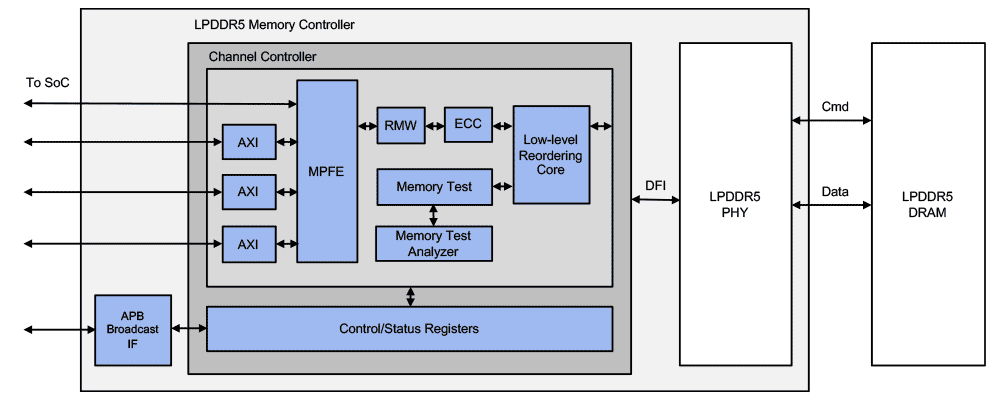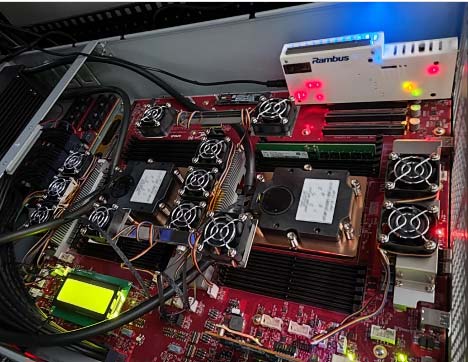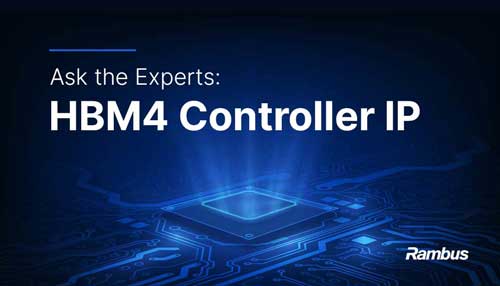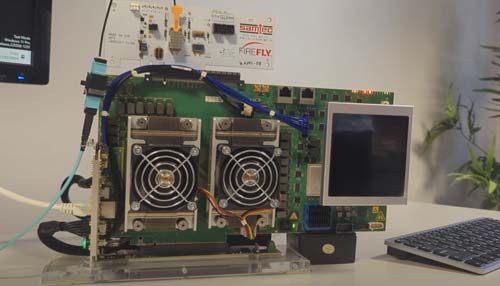Home > Interface IP > LPDDR Memory Controller IP
LPDDR Memory Controller IP
Rambus LPDDR5T/5X/5 and LPDDR4X/4 digital controllers deliver high memory bandwidth and throughput for low power applications including mobile, automotive, Internet of Things (IoT), laptop PCs and edge networking devices.
| Version | Maximum Data Rate (Gbps) | Controller |
|---|---|---|
| LPDDR5T/5X/5 | 9.6 | |
| LPDDR4X/4 | 4.266 | |
| LPDDR4X/4 & LPDDR5T/5X/5 Combo Controller Core | 9.6 |
LPDDR Controller IP
| Feature | LPDDR5T / LPDDR5X / LPDDR5 | LPDDR4X / LPDDR4 |
|---|---|---|
| Data Rate (Gbps) | 9.6 / 8.5 / 6.4 | 4.266 / 3.2 |
| Memory Clock Operation (MHz) | 800/1066 | 800/1066 |
| Device Densities (Per Channel Per Rank) | Up to and including 32Gb | Up to and including 16Gb |
| DQ Support | 16 or 32 bits | 32 bits |
| ECC Support | In-Line ECC (also Link ECC) | In-Line ECC |
| ECC Scrubber | Supported | Supported |
| Bank Management | Monitors status of each bank – 16 banks per rank monitored and helps minimize access delays | Monitors status of each bank – 8 banks per rank monitored and helps minimize access delays |
| Bank Refresh | Yes | Yes |
| Optimize Performance and Throughput | Queue-based User Interface with Built-in Reordering Scheduler | Queue-based User Interface with Add-on Reordering Scheduler |
| Parity Protection of Stored Registers | Yes | Yes |
| Look-ahead Activate, Precharge and Auto-Precharge Logic | Yes | Yes |
| PHY Interface | DFI 5.1 | DFI 5.0 |
| Multiple Ranks | Yes (up to 4) | Yes (up to 4) |
| WCK:CK Ratio | 4:1 | |
| CK:DFI_CLK Ratio | 1:1 | 2:1 |
| Mode Support | x16 and x8 | x16 |
| Data Bus Inversion (Read and/or Write) | Yes | Yes |
| Mode Register Write (MRW) and Mode Register Read (MRR) | Yes | Yes |
| Self-refresh and Power-down Modes | Yes | Yes |
| ZQ Calibration | Command-based (Manual and Automatic) and Background | Command-based (Manual or Automatic) |
| Add-On Cores | AXI Core Bus Interface Multi-Port Front-End In-Line ECC Advanced RMW Memory Test/Advanced Memory Test Memory Analyzer | AXI Core Bus Interface Multi-Port Front-End Reorder In-Line ECC RMW Memory Test Memory Analyzer |
LPDDR5T/5X/5 Memory Controller Operation
The LPDDR5T/5X/5 controller core accepts commands using a simple local interface and translates them to the command sequences required by LPDDR5 devices. The core also performs all initialization, refresh and power-down functions.
The core uses bank management logic to monitor the status of each LPDDR bank. Banks are only opened or closed when necessary, minimizing access delays.
The core queues up multiple commands in the command queue. This enables optimal bandwidth utilization for both short transfers to highly random address locations as well as longer transfers to contiguous address space. The command queue is also used to opportunistically perform look-ahead activates, precharges and auto-precharges further improving overall throughput.

Add-On Cores such as an AXI Core Bus Interface, Multi-Port Front-End and In-Line ECC Core can be optionally delivered with the core. The core is delivered fully integrated and verified with the target LPDDR5 PHY.
LPDDR5X: Delivering High Bandwidth and Power Efficiency

The bandwidth and low power characteristics of LPDDR make it an increasingly attractive choice of memory for applications in IoT, automotive, and edge computing. LPDDR5X takes performance to the next level with a data rate of up to 8.5 Gbps. Join us to learn which applications can benefit from using LPDDR memory.
- Controller (source code)
- Testbench (source code)
- Complete documentation
- Expert technical support
- Maintenance updates
- Customization
- SoC Integration



